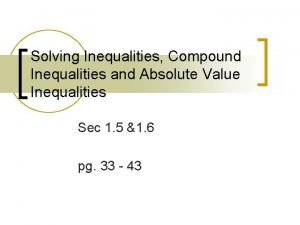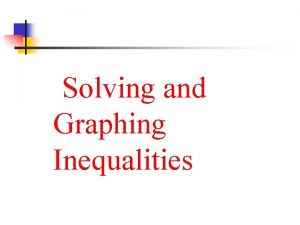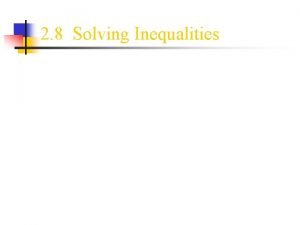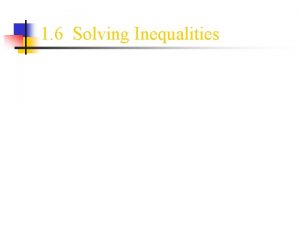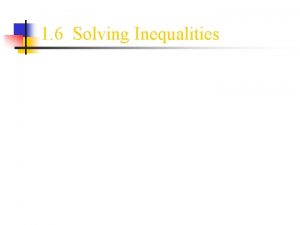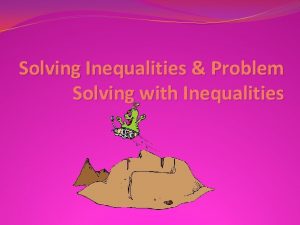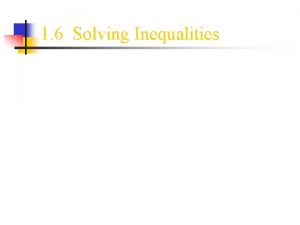Social and economic inequalities are arranged so that









- Slides: 9

• Social and economic inequalities are arranged so that they are both: – To the greatest benefit of the least advantaged (the difference principle). – Attached to offices and positions open fairly and equally to all (the principle of equal opportunity).

Principle One • Principle one is called the principle of equal liberty. • Essentially, it says that each citizen's liberties must be protected from invasion by others and must be equal to those of others. • These basic liberties include the right to vote, freedom of speech and conscience and the other civil liberties, freedom to hold personal property, and freedom from arbitrary arrest.

Principle Two • Part of Principle two is called the difference principle. • It assumes that a productive society will incorporate inequalities, but it then asserts that steps must be taken to improve the position of the most needy members of society, such as the sick and the disabled, unless such improvements would so burden society that they make everyone, including the needy, worse off than before.

• Part (b) of Principle two is called the principle of fair equality of opportunity. • It says that everyone should be given an equal opportunity to qualify for the more privileged positions in society's institutions.

• Therefore, according to Rawls, a principle is moral, if it would be acceptable to a group of rational, self-interested persons who know they will live under it themselves. • Some critics of Rawls point out, however, that just because a group of people would be willing to live under a principle does not mean that it is morally justified.

Retributive Justice • Concerns blaming or punishing those who do wrong. • Long philosophical discussions are available but we will not touch them. Few Exceptions like: – – Ignorance Pre-declaration in case of Brown lungs. Punishment on the basis of incomplete evidence. Punishment is Proportional to Wrongdoings.

Compensatory Justice • Concerns restoring to a harmed person what he lost when someone else wronged him. • Traditionally, theorists have held that a person has a moral obligation to compensate an injured party only if three conditions pertain:

1. The action that inflicted the injury was wrong or negligent. 2. The action was the real cause of the injury. 3. The person did the action voluntarily.

The Ethics of Care • According to this method, we have an obligation to exercise special care toward the people with whom we have valuable, close relationships. • Compassion, concern, love, friendship, and kindness are all sentiments or virtues that normally manifest this dimension of morality.











